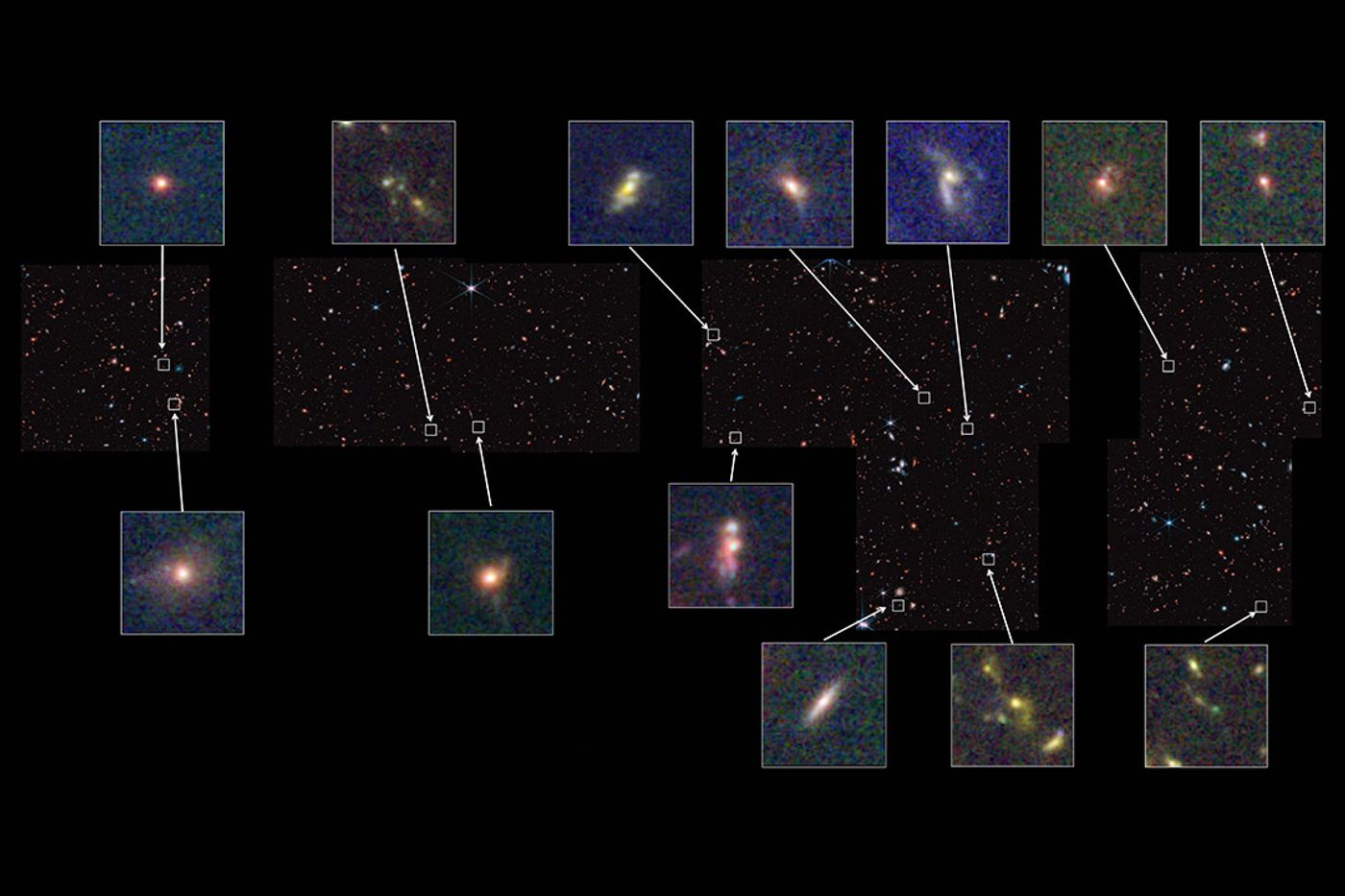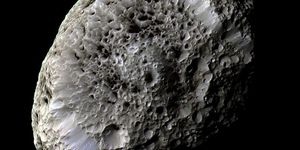JWST Unveils Variation Between Galaxies In The Early Universe
Data from the James Webb Space Telescope (JWST) has shown that there is great diversity of galaxies in the early Universe; the structure of these high redshift galaxies appears to be much more diverse than was previously known. These findings were presented at the 241st American Astronomical Society in Seattle, Washington and have been accepted for publication in The Astrophysical Journal.
A team of astronomers has compared images of hundreds of galaxies taken by JWST for the Cosmic Evolution Early Release Science (CEERS) Survey with images of the same galaxies previously taken by the Hubble Space Telescope. The team investigated 850 galaxies as they appeared 11-13 billion years ago.
In the local Universe, galaxies have a wide range of morphologies – or shapes – with characteristic features. Astronomers use a classification scheme called the “Hubble sequence” to classify galaxies based upon their shape. Spiral galaxies have a flattened disk shape and spiral arms, like a pinwheel. Lenticular galaxies represent a transition stage in evolution and are more oblong with less pronounced features. Elliptical galaxies form from the mergers of other galaxies and have spheroidal shapes without distinct features. Anything that does not fit into these categories is deemed irregular. It's not entirely clear yet which type of galaxy exists at which evolutionary stage.
Out of the 850 galaxies that were inspected, 488 were reclassified as different morphologies than had been gleaned from the images obtained with the Hubble Space Telescope; the JWST images revealed these galaxies at a much higher resolution, and thus with much more detail than ever before. In many of the Hubble images, the galaxies appeared as faint, unresolved smudges, making many of the galaxies unclassifiable.
Caption: This image, a mosaic of 690 individual images taken with the Near Infrared Camera (NIRCam) on the James Webb Space Telescope (JWST, contains a few examples of high redshift galaxies with varying morphologies. Credit: NASA/STScI/CEERS/TACC/S. Finkelstein/M. Bagley/Z. Levav; Cutout images: NASA/STScI/CEERS/TACC/S. Finkelstein/M. Bagley/J. Kartaltepe
This study used an initial data set that was obtained for the CEERS Survey when JWST first came online in June 2022. Since then, JWST has observed 60 more hours for the CEERS Survey, providing the team with thousands more galaxies to explore further. In addition, the team has a new observing campaign that just began this past month, COSMOS-Web, which is the largest General Observer program selected for JWST’s first year of operation. This new observing campaign will provide an astronomically larger sample of galaxies with its 255 hours of observing time. All of this time observing with such a sensitive telescope should provide an immense sample of galaxies that will reveal many mysteries about the morphology and evolution of galaxies in the near future.









